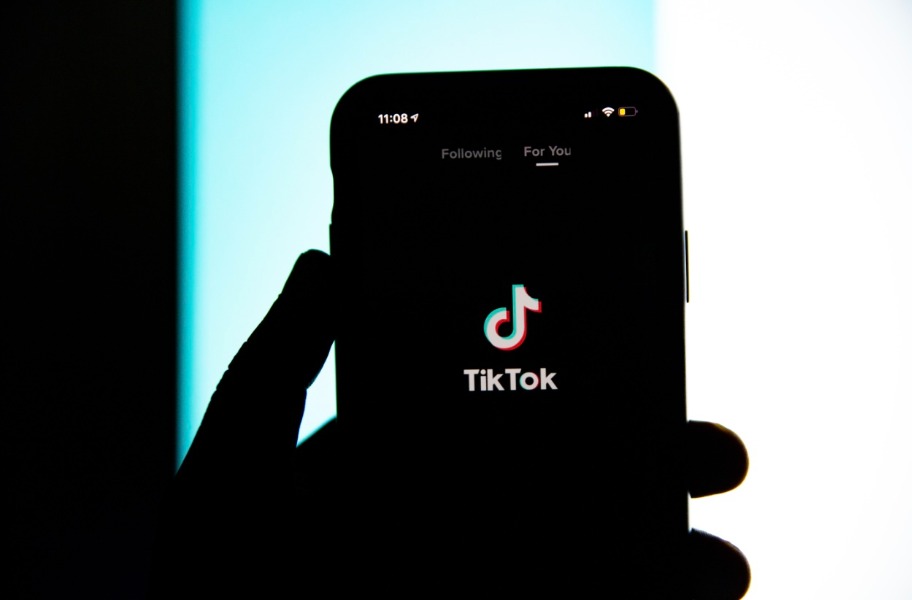A Jawboning Executive Order for Day One of a New Administration

Published by The Lawfare Institute
in Cooperation With

“We begin—and end—with standing,” writes Justice Amy Coney Barrett in today’s Supreme Court decision in Murthy v. Missouri . This outcome is not surprising given the weak factual record in the case, but beginning and ending with standing means the Court declined to provide new guidance on when government speech qualifies as unconstitutional jawboning—that is, the practice of government officials pressuring social media companies to moderate content on their platforms.
The Court’s key opinion on jawboning this term is not the much-awaited Murthy case, but rather National Rifle Association of America v. Vullo (NRA v. Vullo). In that case, the Court affirmed the 1963 case of Bantam Books v. Sullivan, which stands for the proposition that when it comes to government influence on the speech-related decisions of a private organization, persuasion is permissible, but coercion is not. According to the Court, the persuasion-coercion test remains the right one.
But the challenge of the persuasion-coercion test is that the distinction between the two concepts is extremely blurry, particularly when the speaker is the government, with the power to legislate and litigate. While NRA v. Vullo may have resolved the legal question about how a court should draw the line between constitutional government speech and unconstitutional jawboning, neither NRA nor Murthy offers technology company employees and government employees an answer to a critical question: How should government employees behave when they contact social media platforms about their speech policies and practices?
To resolve this blurriness, the president who takes the oath of office on Jan. 20, 2025, should issue an executive order on jawboning on the first day of his administration. The practice of issuing day-one executive orders is now common; presidents use these executive orders to set the tone for a new administration. For instance, on the first day of a new administration, a new president often issues an executive order on ethics to guide the behavior of executive branch employees. These executive orders are not required by law, and they do not deal with line-drawing between constitutional and unconstitutional conduct. Instead, they go beyond questions of constitutionality to focus on best practices for administration employees: What type of conduct does the president expect of administration employees?
An executive order on jawboning could offer similar guidance to executive branch officials who engage with technology companies about their decisions on content moderation questions. The relevant question is not whether their conduct is constitutional or not, but instead—as with questions related to ethics—how the president expects administration employees to behave. As Katie Harbath and I emphasized in an essay we wrote for a blog series hosted by the Knight Institute for the First Amendment, both Republicans and Democrats jawbone. An executive order outlining a code of conduct for communication with technology platforms would be useful no matter who occupies the White House next.
With the issues left undecided by Murthy and the first day of a new administration less than six months away, time is of the essence. The task is no longer simply to theorize about whether a jawboning executive order might be sensible but, instead, to consider what such an executive order might say. To increase the likelihood that a new administration issues an executive order on jawboning on day one, the transition teams that are already planning day-one action need options for text they might use.
Below is one model for an executive order on jawboning. Each section provides model text that a transition team could draw from, while also describing the purpose and features of each key provision.
The aim here is not to publish a definitive version of a jawboning executive order but, instead, to outline a number of options and parameters that new administration officials could use as a starting point for establishing more practical, detailed guardrails to govern jawboning. Others will rightfully point to potential downsides associated with each provision (anyone interested in reviewing a range of expert perspectives on this issue should refer to the blog series published by the Knight First Amendment Institute at Columbia University, based on a convening it hosted in October 2023).
Trying to draw clearer rules for jawboning is a fraught exercise: It is easy to inadvertently prohibit desirable conduct or permit undesirable conduct. If others can draft model executive orders that better reconcile the costs and benefits of this type of government communication, they should propose those alternatives. Whatever the specific language of an executive order might be, finding an alternative to the status quo is important in ensuring that when a new administration begins in January 2025, the future of jawboning will look better than its past.
A Model Executive Order on Jawboning
Section 1: Guidelines for Permitted Communications
An executive order on jawboning should start by describing what conduct should be permitted and what conduct should be prohibited. Given the range of situations that might unfold, developing a bright-line test seems impossible, but providing executive branch officials with a list of factors for evaluating conduct is a useful starting point. A number of scholars have emphasized the importance of analyzing several different factors in assessing the constitutionality of government communication. An executive order instead focused on guiding executive branch behavior could draw from this approach to articulate factors for government employees to consider when they communicate with tech platforms.
The question then is what types of moderation-related communications should an administration permit its employees to engage in. One option is to implement a wider moat between permitted and prohibited communications than the Court’s test: Rather than trying to parse the narrow difference between “coercion” and “persuasion,” an executive order could draw a line between permissible “advisory” or “educational” communications on one hand, and more forceful prohibited communications on the other. Although the Court is clear in NRA v. Vullo that government employees are permitted to go beyond “advisory” communications to try to “persuade” platforms to make specific decisions on speech, a more prophylactic approach will give clearer guidance to both government employees and tech platforms.
All the factors proposed here should be considered by government officials who contact tech platforms about their speech decisions, but none of them should necessarily be dispositive for determining whether a communication is inappropriate.
Here is one option for a section of an executive order that outlines permissible communications.
Section 1. Guidelines for permitted communications between government employees and online platforms. Executive agency employees may provide advisory or educational information to an online platform that the platform may use to inform its content moderation decisions. In considering whether a communication may be advisory or educational, an employee shall consider the following factors.
- Whether the communication contains information about the public impact of a content moderation decision, such as how the decision impacts a representative’s constituents or the effect of a content moderation decision on public safety.
- Whether the communication is intended to develop a clearer understanding of the online platform’s products, policies, or enforcement procedures.
- Whether the communication constitutes a good-faith effort to advise the online platform about how to comply with U.S. law.
- Whether the communication is intended to convey information about relevant academic research in the field.
Each of the factors here is advisory in nature. Government employees may communicate how a platform’s decision about content affects the public or specific constituents. This type of information may be useful for platforms that are seeking to understand the costs and benefits of their moderation policies and may shed light on dynamics that platforms cannot fully see or understand by reviewing their own internal data.
Communication between government employees and platforms may also be beneficial when they are advising each other on relevant policies or laws. The government may want to understand the details of a platform’s content moderation policies. Platforms benefit from learning about how various laws apply to their products. These types of communications should be permitted and in many cases encouraged.
Finally, governments and platforms should communicate about academic research that might help each side to better understand the impact of content moderation practices. Research on content-related topics—like misinformation, polarization, political advertising, and political bias—routinely reveals insights that can help governments and platforms to develop policies and practices that are more firmly rooted in evidence. Active discussions about these topics will benefit government employees and tech employees to develop stronger products, product policies, and public policy.
Section 2: Guidelines for Prohibited Communications
The second section of the executive order should outline prohibited communications. As with communications that are permitted, it is difficult to develop a bright-line test to specify precisely which communications are prohibited. But an executive order could still provide valuable guidance to executive branch officials by outlining a set of factors they should consider when they communicate with tech platforms. To provide government employees with clarity on the full scope of prohibited conduct, the executive order would necessarily include factors that align with the Court’s definition of unconstitutional communication in NRA v. Vullo, as well as some factors that go beyond the standard outlined by the Court.
Here is one option for a section of an executive order that outlines prohibited communications.
Section 2. Guidelines for prohibited communications between government employees and online platforms. No employee of any executive agency shall coerce, attempt to coerce, or appear to coerce an online platform to alter a content moderation decision, including whether to host, remove, or downrank a piece of content. In considering whether a communication may be coercive or appear to be coercive, an employee shall consider the following factors:
- Whether the communication includes a request to moderate lawful content, including to host, remove, or downrank content.
- Whether the communication includes an express or implied threat, including the threat of legislative reprisal, criminal or civil enforcement action, holding public hearings, or initiating critical public communications.
- Whether the communication includes an attempt to intimidate the online platform.
- Whether the communication falsely states or implies that a specific content moderation decision is required by law.
- Whether the recipient would reasonably perceive the communication as a threat.
- Whether the communication is private.
If a government employee asks a tech company employee to remove a specific piece of content, the communication is more likely to be coercive than if the employee makes a general comment about the company’s content moderation practices. But of course not all communications that include requests are necessarily problematic, and not all should be prohibited. There may be incidents related to national security or public safety where a government official makes a removal request with the goal of avoiding serious harm. For instance, a government official might request that a platform remove a livestream of a suicide. Yet even if a small number of emergency requests may be desirable, in general, government employees should avoid making specific requests to remove lawful content. If certain content is so problematic that platforms should never be permitted to host it, then the government should pass a law to criminalize it, rather than skirting the democratic process and instead using informal pressure to achieve the desired outcome.
Threats are obviously more likely to make a communication coercive, as are attempts to intimidate a platform. The subjective view of the company employee should be considered as a factor, but as with other factors, it should not be dispositive; some employees may overreact or underreact to a particular communication from a government official. Private communication may also be more likely to fall on the “coercion” side of the line, since it leaves more room for the kind of out-of-the-public-eye pressure that can make it harder for private organizations to resist government pressure.
Section 3: Communication Format, Designated Contacts, and Compliance
Aside from the content of the communication, the form of the communication matters too. Currently, any government employee can reach out to any tech company employee by phone, email, or text message to talk to them about content moderation issues. When any government employee can communicate with any tech employee, the likelihood of problematic communications increases. A senior government official might be able to exert more pressure by contacting a junior tech company employee, rather than a CEO or a general counsel. Picking up the phone to call a company might lead to more aggressive pressure than writing an email, since a government employee wouldn’t fear that the content of a phone call could be easily recorded or forwarded.
For this reason, an executive order on jawboning should specify that any communication related to a specific request on a content moderation decision should be in writing, and that only certain government employees should be authorized to communicate with a tech platform. If a platform asks that all communication occur through specific channels, then the government should submit requests only through those channels.
An additional option is to require each government agency to designate a certain number of people who can make content-related requests of tech companies. An executive order could also prohibit employees from being able to serve as designated contacts if they work in roles that might be associated with the ability to initiate retaliatory action against platforms, such as government officials who work in enforcement or legislative affairs roles.
Companies should also be able to report government communications that they believe violate the executive order. To make that possible, the executive order should require the Office of Government Ethics (OGE) to publish contact information that company employees can use to make written reports of potential violations. Government employees should also be able to use this channel to report potential violations that they observe.
Here is one option for a section of an executive order that details communication formats, designated contacts, and channels for reporting noncompliance.
Section 3. Communication format and designated contacts
- Any communication from an executive agency employee to an employee of an online platform requesting that the online platform moderate lawful content, including any request to host, remove, downrank content—shall be in writing.
- Each executive agency shall designate no more than three employees who may communicate with online platforms about content moderation decisions. An executive agency employee who works in legislative affairs, enforcement, or policy planning offices may not serve as a designated contact.
- If an online platform designates a recipient or recipients for these communications, including an online request portal or email inbox, then the designated executive agency employees shall communicate about content moderation decisions only with these designated recipients.
- The Office of Government Ethics shall publish contact information, such as an email address, that online platforms may use to file written reports of communications by executive agency employees that do not comply with this Executive Order. Executive agency employees may also use this email address to report communications that do not comply with this Executive Order.
Section 4: Reporting Requirement
One of the benefits of provisions that limit communication to certain channels and certain employees is that it helps to facilitate public reporting on these communications. If all communications regarding content moderation decisions must flow through specified channels, then it will be easier for the government and companies to track requests. If the OGE maintains an email address for reports of violations, then it can compile data on the number of reports it receives. If data is easier to track, then platforms and the OGE can compile it and make it available to Congress and the public. The result will be to produce a clearer public picture of the state of jawboning-type interactions between the government and tech platforms. The Foundation for Individual Rights and Expression (FIRE) recently published model legislation that would require public reporting on service provider requests, and the CATO Institute has offered a similar proposal.
The section of the executive order on reporting should offer granular guidance on the information the executive branch should provide to Congress and the public about the communications covered by the order. For example, it should require the OGE to provide an annual report to Congress that offers an overview of the nature of the communications between government employees and tech companies. It should include data on the number of communications and the number of complaints received by the OGE. The OGE should make a version of this report public, but the public version may include redactions required by law.
Here is one option for a section of an executive order that outlines the scope of a reporting obligation:
Section 4. Reporting Requirement
- The Office of Government Ethics shall provide an annual report to Congress summarizing communications between executive agency employees and online platforms about content moderation.
- This report shall include data on the number of communications from executive agency employees to online platforms that requested that an online platform take a specific content moderation action—including hosting, removing, or downranking content—and the number of complaints the Office of Government Ethics received from online platforms alleging a violation of this Executive Order.
- The Office of Government Ethics shall make a version of this report available to the public, with only those redactions required by law to protect confidentiality or national security.
Section 5: Ethics Pledge
Some administrations require each appointee to sign an ethics pledge. Both the Biden administration and Obama administration ethics executive orders included a required ethics pledge for appointees. These pledges may outline commitments on a range of specific issues. For instance, the Biden administration pledge included a commitment to “conduct that upholds the independence of law enforcement and precludes improper interference with investigative or prosecutorial decisions of the Department of Justice.”
If the ethics order of a new administration includes a pledge requirement, then incorporating language on jawboning may be another useful way to emphasize the president’s expectations of administration employees.
A new administration could effectuate this expanded ethics pledge by either adding it to an ethics executive order or by referencing it in an executive order on jawboning. If a new administration decides to pursue this latter path, here is one option for text it could use:
Section 5. Revision to the Ethics Pledge. The following language shall be added to the Ethics Pledge, which shall be signed by every appointee in every executive agency appointed on or after January 20, 2025: “I commit to conduct that avoids coercing or appearing to coerce the content moderation decisions of private entities.”
***
The Court’s decisions this term suggest that specific guardrails on jawboning practice will need to come from outside the judiciary. An executive order issued on day one of the new administration offers one option for giving government employees and tech platforms the guidance they need to develop a more principled, transparent, accountable framework for their communications on content moderation decisions.





